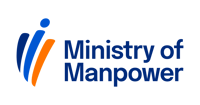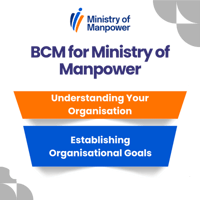Chapter 2
![BCM [E1] [C2] Understanding Your Organisation Banner](https://blog.bcm-institute.org/hs-fs/hubfs/BCM%20E1%20Blog%20Banner/BCM%20%5BE1%5D%20%5BC2%5D%20Understanding%20Your%20Organisation%20Banner.png?width=750&height=150&name=BCM%20%5BE1%5D%20%5BC2%5D%20Understanding%20Your%20Organisation%20Banner.png)
Understanding Your Organisation for MOM Singapore
Introduction

In implementing a business continuity management (BCM) system aligned with ISO 22301:2019, it is essential to develop a thorough understanding of the organisation being considered.
For this eBook, Resilient Support: Implementing Business Continuity Management at the Ministry of Manpower (Singapore), this chapter provides a comprehensive overview of the Ministry of Manpower (“MOM”), including its purpose, scope, internal and external context, key stakeholders, and organisational structure.
This understanding forms the basis for subsequent BCM planning, risk assessment, strategy development, and exercising phases.
Overview of MOM
The Ministry of Manpower (MOM) is a key ministry of the Singapore Government responsible for shaping and overseeing workforce and workplace-related policies.
Vision, Mission, and Service Principles
- Vision: “Empowered Workforce, Thriving Workplaces.”
- Mission:
- Empower Singaporeans to create job opportunities and secure their retirement.
- Ensure workers are rewarded with progressive workplaces.
- Enable businesses to thrive and create good jobs for Singaporeans.
- Service Principles (H.E.A.R.T.): Hear them out; Make it Easy; Anticipate their needs; Respect every individual; Be Timely.
Scope of Responsibilities
MOM’s responsibilities span various facets of labour, employment, workforce development, workplace safety and health, and manpower policy. Key functional areas include:
- Employment Practices: setting and enforcing employment standards, leave, rest days, and fair consideration.
- Work Passes and foreign manpower: issuance and oversight of Employment Passes, S passes, work permits; managing foreign workforce complementarity and quotas.
- Workplace Safety & Health (WSH): regulatory oversight of occupational safety and health, accident reporting, certification/licensing of service providers, and monitoring of central hazard installations.
- Manpower Planning and policy: forecasting labour market trends, shaping human capital strategies, collaborating with employers/unions, and enabling business growth and workforce adaptability.
Internal and External Context
For BCM under ISO 22301, understanding the organisation’s internal and external context is vital.
External Context
- Economic and labour-market environment: Singapore’s dynamic economy, global connectivity, workforce mobility and skills development drive MOM’s strategic focus on adaptability, inclusion and competitiveness.
- Regulatory and legal framework: MOM operates within laws such as the Workplace Safety and Health Act and the Employment Act, which set the baseline for workforce regulation and safety.
- Stakeholder-driven tripartite model: MOM works closely with the government, employers, and unions—forming a trilateral partnership to shape policy and respond to workforce disruptions.
- Technological, societal, and demographic shifts: The changing nature of work (gig economy, digitalisation), changing skill sets, and workforce composition represent both opportunities and risks. MOM’s policies reflect adaptation to these trends.
- Global manpower flows and external shocks: Singapore’s reliance on foreign manpower, combined with global events (pandemics, economic downturns, supply-chain disruptions) underscores sensitivity to external disruption.
Internal Context
- Mission-driven public agency: MOM is organised to deliver its mission of workforce empowerment, safe workplaces and enabling business. Its operational resilience, service continuity and policy responsiveness are therefore key.
- Organisational structure and divisions: MOM comprises multiple divisions and statutory boards under its purview (such as Workforce Singapore and the Central Provident Fund Board), which adds to its ecosystem complexity.
- Service delivery and stakeholder interfaces: MOM interacts directly with workers, employers, and the public through eServices, inspections, policy engagements, and compliance monitoring. As such, disruption to service delivery or stakeholder trust would have a significant impact.
- Resource dependencies and critical processes: Key processes include work pass issuance, WSH oversight, labour market data analysis, employer/worker outreach, and system infrastructure (digital portals). These underline potential points of failure for BCM planning.
Key Stakeholders
Identifying stakeholders is essential for BCM planning (ISO 22301 requirement). Major stakeholders for MOM include:
- Workers / Employees (Singaporean and foreign): beneficiaries of policies, users of services, subjects of compliance.
- Employers and the business community, recipients of policy, rely on work passes, workforce planning and regulatory clarity.
- Unions and labour associations: represent workers, engage in tripartite dialogues, and collaborate on workforce initiatives.
- Statutory boards under MOM, such as Workforce Singapore and the Central Provident Fund Board, have a critical interface with MOM’s functions.
- Government and policy-making bodies: the Cabinet and other ministries (e.g., Education, Trade & Industry), which set the broader strategic direction.
- Supporting service providers and regulatory ecosystem: training providers, WSH licensed firms, foreign-worker dormitory operators, e-services vendors.
- General public and community: as the workforce and economy at large are impacted by MOM’s policies, public trust and reputation are key.
- Technology and system suppliers: digital infrastructure supporting MOM’s portal and services – critical in continuity planning.
Critical Activities & Services
To develop a BCM programme aligned with ISO 22301, the organisation must identify its critical activities and services. For MOM, these include (but are not limited to):
- Processing of work passes (Employment Passes, S Passes, Work Permits) and renewals: key for business operations and workforce flow.
- Execution of workplace safety and health oversight: accident reporting, inspections, certification/licensing, enforcement.
- Labour market intelligence and manpower policy formulation: data gathering, analysis, planning for workforce resilience.
- Stakeholder engagement and tripartite collaboration: enabling employer-worker dialogue, policy feedback, and workforce development.
- Service delivery via eServices (myMOM Portal, online forms, calculators) and customer-facing portals: supporting accessibility and continuity of operations.
- Communication and outreach: public advisories, regulatory changes, stakeholder guidance.
- Incident response and worker protection (especially in disruption scenarios): moments when workforce disruptions, accidents or external shocks occur.
Any disruption to these critical activities could significantly impair MOM’s ability to meet its mission, affect workforce confidence, compromise workplace safety, or erode Singapore’s labour market stability.
Governance & Organisational Structure
While detailed organisational charts are internal, some high-level governance aspects relevant for BCM are:
- MOM is ministerially led and works under the Singapore Government’s cabinet framework.
- MOM oversees statutory boards, each with their own governance and mandate (for example, Workforce Singapore).
- Service principles (H.E.A.R.T.) provide the service philosophy, which must also inform continuity planning (e.g., "Be Timely" implies continuity expectations).
- Digital systems and customer service delivery are central – system resilience, cyber resilience, and staffing continuity should be embedded in BCM.
- MOM’s governance must also align with whole-of-government BCM/continuity frameworks (given its national-level role).
Implications for Business Continuity Management
Understanding MOM’s context and operations has direct implications for developing a BCM system aligned with ISO 22301. Some key considerations:
- Scope setting: The BCM programme scope must cover those critical activities and services identified (Section 5) and consider dependencies (internal and external).
- Risk Analysis and Review (RAR) and Business Impact Analysis (BIA): Given MOM’s responsibilities (e.g., work passes, workforce safety), risk scenarios may include digital system outages, major workplace accidents, disruptions to foreign manpower, regulatory compliance failures, and major labour unrest. A Business Impact Analysis (BIA) will assess the operational, reputational, regulatory, and societal impacts of these.
- Strategic alignment: The BCM objectives must align with MOM’s vision (“Empowered Workforce, Thriving Workplaces”) and service principles, ensuring that continuity planning supports these strategic goals.
- Stakeholder engagement: BCM planning must involve employer groups, unions, internal divisions, and e-services teams. Communication plans must reflect the tripartite nature of labour relations.
- Service recovery: within acceptable timelines. The “Be Timely” principle means that defined recovery time objectives (RTOs) must be realistic and aligned with service expectations of stakeholders.
- Resilience of supporting systems and supply chain: Given MOM’s heavy reliance on digital portals, third-party service providers, and external lodging (worker dormitories and training providers), continuity planning must address these dependencies.
- Testing, exercising and continual improvement: A BCM programme for MOM must account for evolving external context (e.g., changing labour market trends, pandemic risks, foreign workforce disruptions) and therefore emphasise continual improvement—the “anticipate their needs” aspect of H.E.A.R.T.
- Regulatory/compliance lens: Because MOM itself sets and enforces employment and safety regulations, any continuity failure could have regulatory or legal implications; the BCM plan must ensure compliance obligations are maintained during disruptions.
![Banner [Summary] [BCM] [E1] [C2] Understanding Your Organisation](https://no-cache.hubspot.com/cta/default/3893111/f008eb8e-2d77-4964-abfa-a4ef718b1284.png)
This chapter has established a robust understanding of the Ministry of Manpower (Singapore)—its purpose, scope of work, internal and external context, key stakeholders, and critical services.
Armed with this knowledge, the subsequent chapters of the eBook will guide implementation of the ISO 22301-aligned BCM methodology—covering project management, risk analysis and review (RAR), business impact analysis (BIA), BC strategy (BCS) development, plan development (PD), testing/exercising (TE), and program management (Pgm) —in the context of MOM.
By grounding the BCM programme in the specific institutional context of MOM, we enhance relevance, buy-in, and effective resilience for the organisation’s mission.
More Information About Business Continuity Management Courses

 To learn more about the course and schedule, click the buttons below for the BCM-300 Business Continuity Management Implementer [B-3] course and the BCM-5000 Business Continuity Management Expert Implementer [B-5].
To learn more about the course and schedule, click the buttons below for the BCM-300 Business Continuity Management Implementer [B-3] course and the BCM-5000 Business Continuity Management Expert Implementer [B-5].
![Register [BL-B-3]*](https://no-cache.hubspot.com/cta/default/3893111/ac6cf073-4cdd-4541-91ed-889f731d5076.png) |
 |
 |
 |
 |
 |
![FAQ [BL-B-3]](https://no-cache.hubspot.com/cta/default/3893111/b3824ba1-7aa1-4eb6-bef8-94f57121c5ae.png) |
If you have any questions, click to contact us.
|
 |
 |
 |
 |




![[BCM] [MOM] [E1] [C1] Overview of BCM Case Study](https://no-cache.hubspot.com/cta/default/3893111/63f94d49-e7be-4ade-93b0-cb4d5c505d69.png)







![[BCM] [MOM] [E1] [C10] Identifying Critical Business Functions](https://no-cache.hubspot.com/cta/default/3893111/f19dbb07-448c-4021-9605-82ad98643d7f.png)


![Email to Sales Team [BCM Institute]](https://no-cache.hubspot.com/cta/default/3893111/3c53daeb-2836-4843-b0e0-645baee2ab9e.png)

